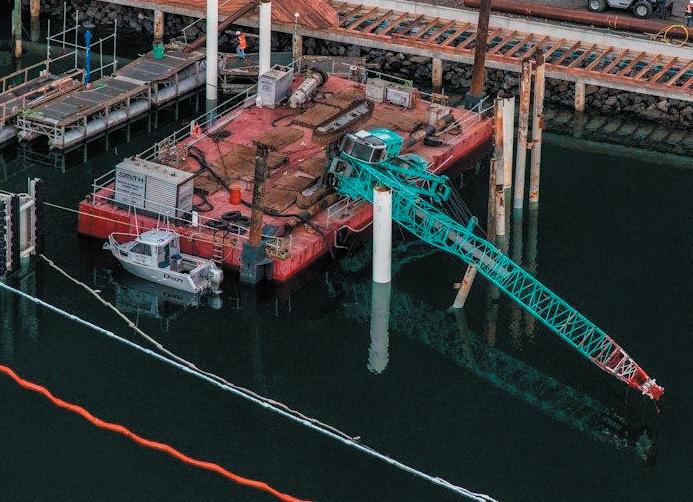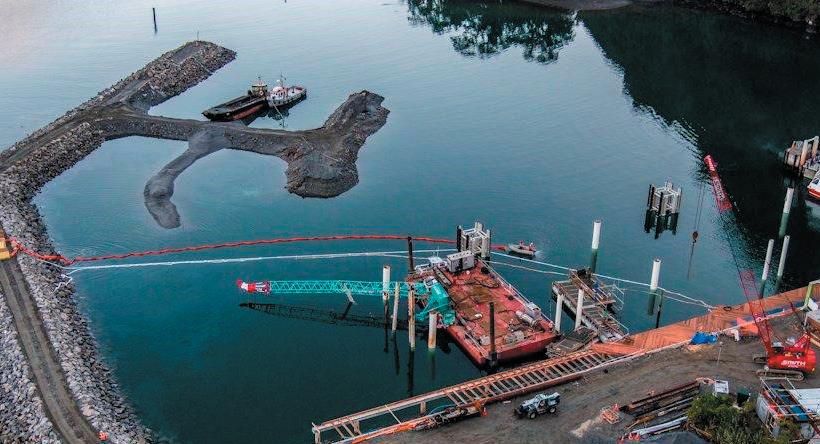
2 minute read
INCIDENT REPORT
August 2012 Milford Sound, New Zealand
Project Cranes The Outcome Key Learning
Advertisement
Fresh Water Basin Redevelopment Project
55-tonne Kobelco 7055
Significant property damage. No injuries. • Reminder to de-rate cranes when working on barges. • Chain down and position the crane. • Access and escape plans required, including life jackets.

In August 2012, a crawler crane tipped over the side of a pontoon – an incident which resulted in significant property damage. If the boom hadn’t been caught on an existing pile, the entire crane would have plunged into 6-metre deep water. Thankfully no injuries were sustained by the operator or other personnel. The 55-tonne crawler crane was being operated from a flexi-float modular (un-powered) barge when it tipped over. The barge was secured in position by a combination of spuds and mooring winches to anchors and piles. Owned and operated by Smith Crane & Construction, the machine was carrying out piling works on the Fresh Water Basin Redevelopment in Milford Sound. Investigations found the tip-over was caused by the machine being operated outside of its rated capacity at the radius and boom length being used. It was established that environmental factors and mechanical failure did not contribute to the incident. The crane was not

chained to the barge, as it was required to move on the barge deck during operations. Key learnings from this incident
Crane assembly checklists must be completed
Chaining down is to be undertaken at each lifting position, at either end of the barge
The crane operator and dogman must complete lift plans
Operators should never exceed their crane’s Safe Working Load (SWL)
Crane barge charts must be followed and the crane must remain within its capacity including the de-rated capacity applied when working on a barge This incident also provides a valuable reminder of the importance of emergency response planning.
The incident investigation revealed the crane operator’s door had jammed. Had the crane plunged into the water the outcome of the incident could have been a devastating fatality. Although the cab and its operator did not end up in the water during this incident, emergency measures need to be in place for any crane operation over water. A break-glass hammer should be installed within easy reach of the operator, and the cab door or window should be jammed open during operation to allow for easy escape.










